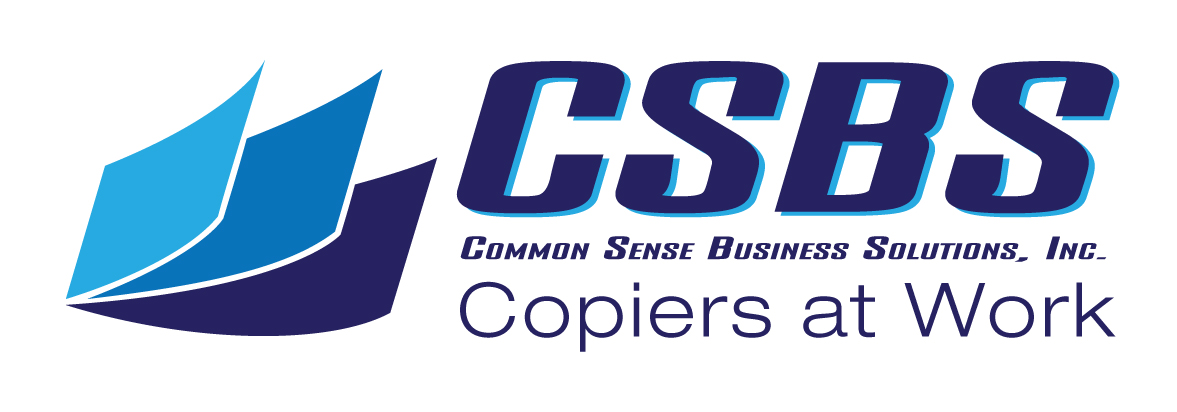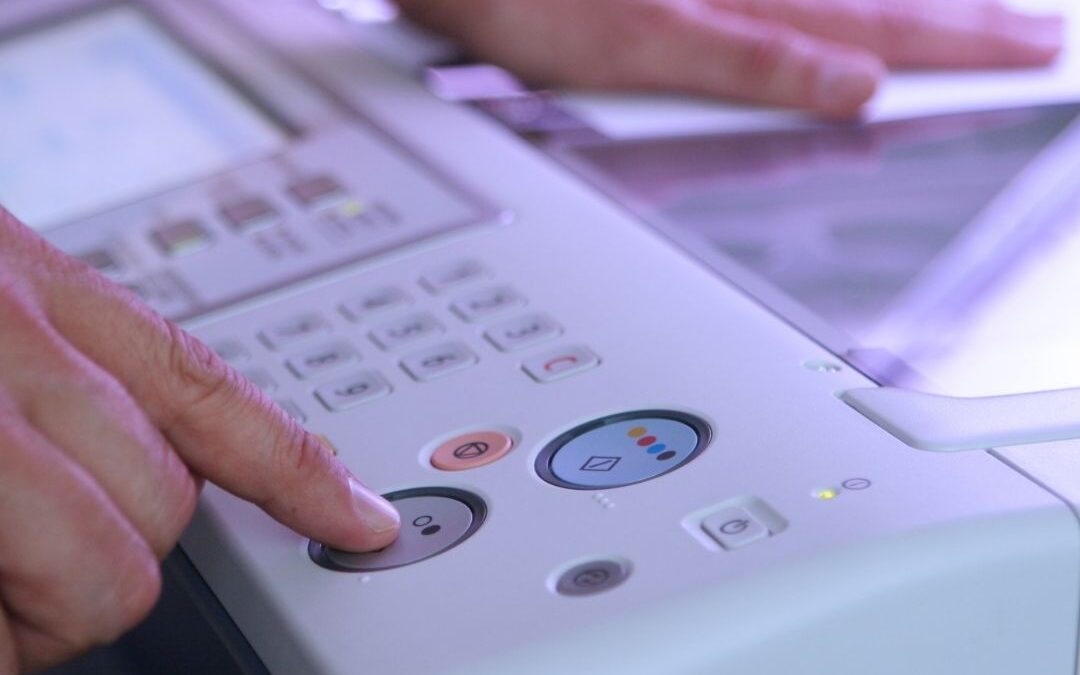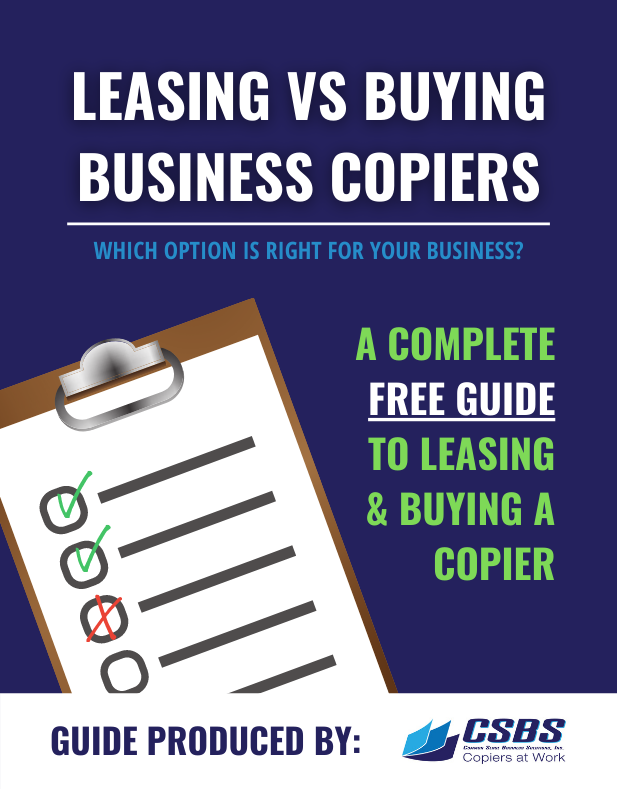One of the inescapable realities for any business is marketing. And, while the traditional route is to hire a marketing firm or have a marketing department in-house, your office copy machine can be a great marketing tool.
Unless your machine is a hold-over from the 1980s the capabilities of most modern copy machines are often underused. In fact, you may be surprised at what you can achieve!
The Copy Machine Has Evolved
For most people working in office environments today copy machines are as common as telephones or light switches. It’s easy to take it for granted that there’s always going to be at least one copier in a workplace and copies can be had in a few seconds.
It wasn’t always that way.
Business.com recalls,
“The photocopier was the transformative office tool of its time. Imagine tackling your work without it – likely having to painstakingly copy every document by hand. Before the copier came into existence, there were numerous attempts at early copy automation, yet all were imperfect. That is, until 1959, the year Xerox released the first “modern” version of the photocopier.
It was called “914,” and it was bulky, heavy and hard to use. It was about the size of two washing machines, and some of them literally caught on fire.”
Fortunately, things got much better. By the 1970s other technology companies began to join the marketplace and brands such as Konica and Minolta came out with their own photocopiers. Nonetheless, in the 1970s, Xerox continued to dominate the photocopier market.
Those who have been around a while can remember standing at the large, unwieldy machines, patiently waiting for a somewhat grainy black and white copy slowly making its way out of the beast. If you wanted to reproduce a photographic image you were out of luck.
Oh, you would get a copy of your image, but it was muddy, indistinct and far from usable for anything other than a reference within other documents. Ironically, there are image apps available today that allow graphic designers to reproduce the look and feel of these early photocopied images of photographs.
In addition to the relatively poor image quality, a persistent tendency to jam, and paper that felt funny and smelled bad, the copying process was very slow – literally seconds per page.
However, over time, these competing technologies improved, and consumers eventually had access to a wide range of photocopier models, from low-end units to enterprise models. And they are faster – much faster. In fact, today the average copy machines produce around 40 black and white pages per minute, while the fastest copiers can spit out about 100 pages a minute, or one page in less than one second.
Perhaps the biggest downside of early copy machines is the lack of versatility. There was virtually no stapling or hole-punching functions built in, no two-sided copies unless you could figure out how to do that manually, and color copies were rare and expensive.
No longer!
Great Copy Machine Tips for Your Marketing Efforts
Businesses, especially small businesses, use their copy machines and printers for far more than simply “making a copy” and the potential is vast and ever growing.
One of the areas that can really benefit smaller companies is using their machines for producing marketing materials.
With the vast array of papers produced today that can be easily run through both inkjet and laser printers, and the image quality of even lower to mid-range color copiers, there is almost no end to what can be created.
There are some physical limitations, of course. Most standard copiers can only handle large format paper that is legal size, or up to 11” x 17”, which is more than enough for most projects. Many units can print cardstock up to 60 lb weight. And, while most copiers don’t fold copies, many do offer a three-fold function for mailings and small booklet folding and even saddle stitch binding.
This means you can create business cards, brochures, whitepapers, case studies, spec sheets, marketing event “one sheets”, posters for infographics or banners, and a host of other creative marketing collateral. Not only is this far more cost-effective than outsourcing the printing side of the process.
This approach can even be taken if you’ve outsourced the creative aspect of your marketing materials. Agencies and freelancers are fully capable of submitting their project files in a format that will allow the client to print in-house, so to speak.
And it was a big deal when the first machines that could staple copies came along!
Being creative and cost-effective with your copier and your marketing projects also means how you use the copy machine. With that in mind, here’s a few productivity tips along those lines:
Try having two dedicated copiers
Although it may mean purchasing a second machine, having two copiers can actually save money. Dedicate your standard copier for everyday black and white printing. This will be the office “workhorse” copy machine for high volume printing.
Use your high-end color copier/printer for the quality jobs like your marketing collateral. This way, the more expensive color inkjet or laser cartridges are used less frequently, significantly reducing your overhead costs.
Only use gray scale or draft printing
For first drafts or test copies, full color isn’t always necessary. This also means that, if the paper size is compatible, you could even use your black and white copier for these materials. Also, some color copier/printers allow for a draft mode in color. This can be helpful for editing and review of early drafts of a project while preserving ink. And don’t forget that you might be able to use digital proofs on your computers.
Opt for compatible ink and toner cartridges
One of the biggest expenses for businesses is the cost of toner and ink cartridges from the copy machine manufacturers. Fortunately, there are a variety of sources for “compatible ink” or after market ink and toner cartridges. Most of these are manufactured and engineered to meet the performance standards of the original manufacturers, yet cost less – sometimes far less – than OEM cartridges often purchased in office supply “big box” stores.
Leverage Copier for In-House Branded Packaging
Beyond flyers and posters, modern copiers can be used for creating branded packaging materials, a strategy that’s particularly effective for small businesses aiming to enhance brand visibility. With high-quality color and sturdy paper options, businesses can produce branded labels, custom packaging inserts, and even personalized tags for products—all with their in-house copier. By printing on durable paper types like cardstock, companies can create professional-grade materials without relying on expensive external suppliers. This not only saves costs but also gives businesses control over the design and timing of their packaging efforts.
Utilize Copier for Seasonal Promotions and Campaigns
In-house copiers offer a unique advantage when it comes to creating materials for seasonal campaigns. Instead of placing an order and waiting for delivery, businesses can produce holiday-themed posters, discount flyers, and promotional banners instantly. This flexibility allows for spontaneous marketing, such as producing last-minute promotions for special events or peak shopping seasons. For instance, creating holiday sale posters or special offer tags in-house enables businesses to adapt to customer demand quickly. In fact, 64% of consumers report they are more likely to visit a store if they receive promotional materials ahead of time, showcasing the benefit of on-the-fly in-house printing capabilities.
Boosting Customer Engagement with Interactive Print Materials
Copiers with advanced features can help create interactive print materials that drive customer engagement, such as brochures or posters with QR codes that link to digital resources. Interactive print allows small businesses to blend offline and online marketing, offering customers access to digital discounts, product information, or loyalty programs via printed materials. Studies show that 53% of consumers prefer a blended online and offline shopping experience, making interactive print an appealing tool for retailers. By utilizing their copier’s capabilities, businesses can quickly update materials to keep interactions fresh and relevant to evolving campaigns.
Create Localized Marketing Collateral for Targeted Outreach
Businesses that serve specific neighborhoods or communities can benefit from creating hyper-local marketing materials with in-house copiers. This could include flyers for local events, neighborhood-focused discounts, or materials that appeal to specific demographics within a community. For example, a fitness center could print “New Year, New You” flyers aimed at local residents to drive January sign-ups. Targeted marketing has been shown to increase customer response rates by up to 50%, and having a copier on hand makes it feasible to create and update localized content regularly, keeping the messaging current and community-focused.




